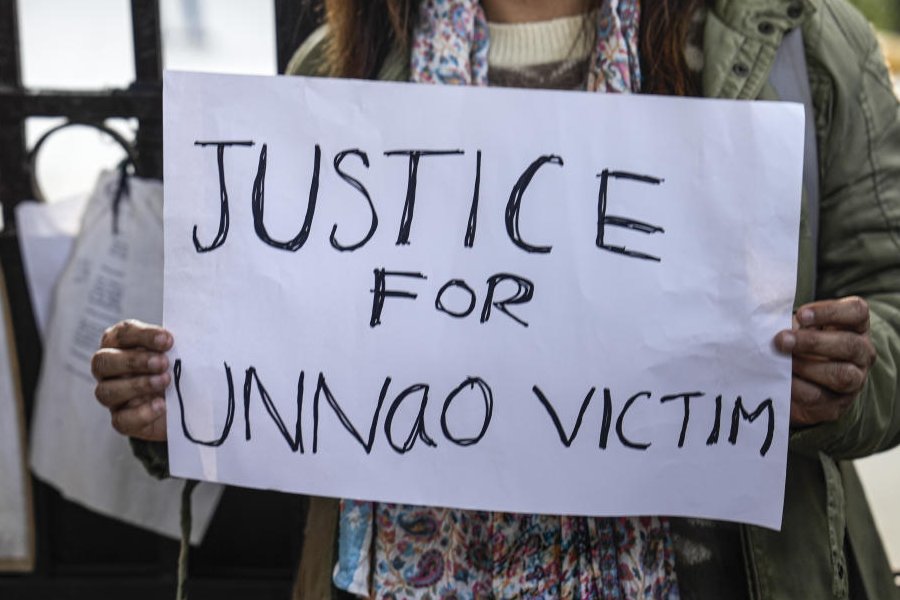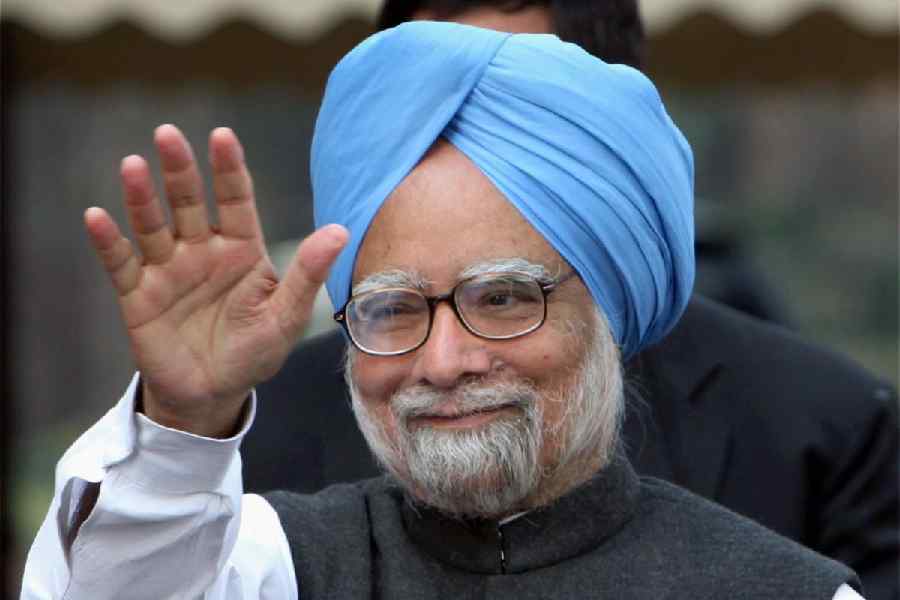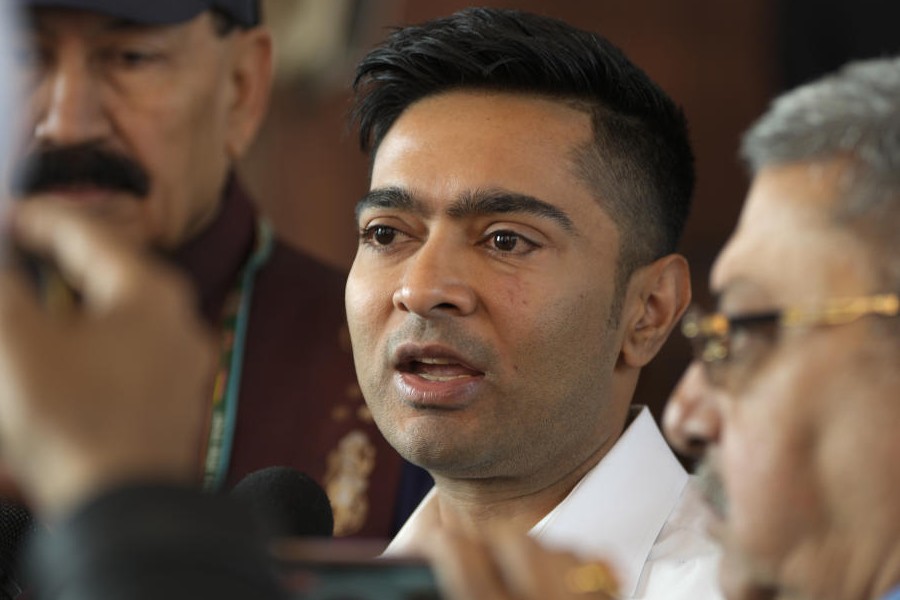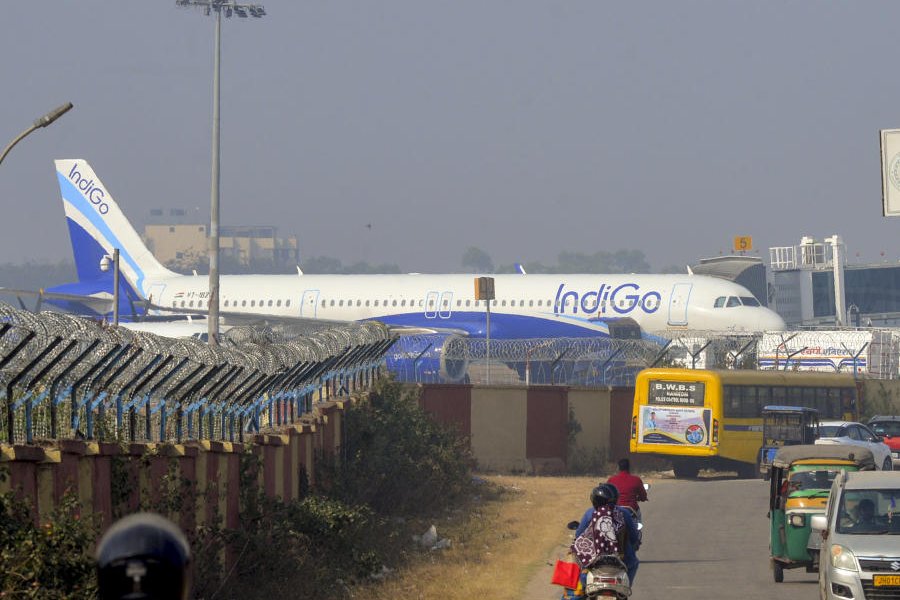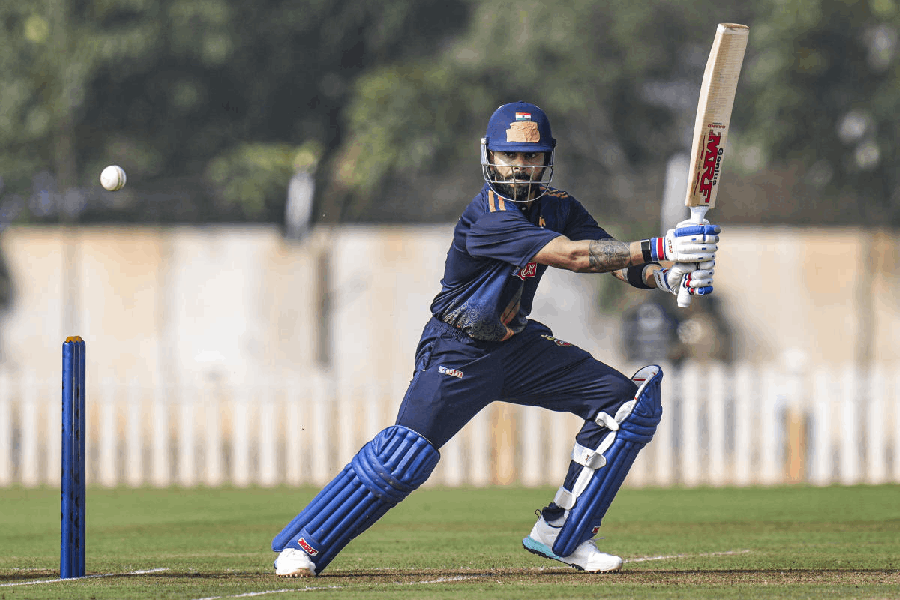 |
| When the peak is within sight: Mt. Everest |
Mount Everest is the easiest to scale of the 14 8,000m-plus peaks that there are. The matter-of-fact voice that makes this eye-popping observation belongs to a man who has scaled three of them and nearly made it to the top of a fourth a few months back.
He is Debasish Biswas, the first civilian from Bengal to have climbed Mt. Everest, Mt. Kanchenjungha and Mt. Annapurna. The last two, he says, are national feats.
The climb to Dhaulagiri nearly claimed the Ultadanga resident’s life. “Everest is easier because it has quite a few facilities available to mountaineers, like ladders and ropes that are put in place by the Sagarmatha Pollution Control Committee, which opens the route every year before the climbing season at the behest of the Nepal government which charges hefty fees as climbing permits. Once the season gets over, the ladders are taken off.”
 |
| Biswas crossing a crevasse en route to Mt. Everest |
It is largely because of these facilities, Biswas points out, that Mt. Everest has seen more than 6,000 successful summit attempts. “The numbers for Kanchenjungha and Annapurna are about 250 and 150 respectively. Annapurna, in fact, has the highest death-per-attempt ratio.”
The 42-year-old income tax official quickly adds that on any peak a height above 8,000m is called death zone. “There is no knowing when Nature changes its whim.”
 |
| heights of glory |
|
Biswas, one of the greatest climbers Bengal has produced, knows how tricky it can get up there. On May 23, he was on the last lap to the summit of Mt. Dhaulagiri, along with Basanta Singha Roy of Mountaineers’ Association of Krishnanagar (MAK) when the ongoing blizzard intensified. “There was just 60-70m left. We were traversing across a steep blue ice wall. Blue ice is the toughest to get a foothold on even with the cramp-on spikes on our boots since they are tough as rock. I saw Gurung, the guide of Spanish climber Juanjo Garra, slip and fall. As he was roped up with Garra, the Spanish too fell under the impact. Somehow, both got stuck 100ft below and did not fall the whole length. Though we could have carried on, it is against mountaineering ethics to cross people who have had an accident. I sent Pasang, one of our sherpas, to help but such was the fury of the blizzard that it ripped off his goggles, leaving the boy shaking in fear. That forced us to abandon the climb and start to descend.”
The ordeal was hardly over. Biswas later learnt that Garra had broken his ankle. Though Gurung did try to carry him down, finally he had to abandon him. Garra succumbed to the cold. A Japanese lady, Chizuko Kono, had also turned back but she ran out of oxygen and died on the way. One of her sherpas reached Camp 3 (7,250m). But due to lack of oxygen, he could not think straight. He had taken shelter in a tent pitched on a sharp gradient on an ice wall. In the evening, he walked out and slipped. His body could not be found.
Biswas might well have joined the casualty count. “In the evening while descending, I lost my vision. Yet I did not stop as that would have meant certain death. I could feel frost bite setting in on my fingers and ear lobes. Our summit camp was still way below, at 7,400m. But I was banking on reaching the Japanese lady’s camp pitched 200m above ours.”
Fumbling his way down, he still had hope for his eyes. Two years ago, standing on the summit of Mt. Everest he had gone partially blind. “In my inexperience, I had removed my goggles while climbing the night before. The biting cold took its toll on the eyes at dawn. But after resting in the summit camp I was all right. As a precaution, from next year’s Annapurna trip I started using high quality goggles.”
But this time, he was forced to remove his eye protection as ice flakes were accumulating on the lenses. “While descending from Everest I had blurred vision. This time I was blind.” Thus he did not see that his team mate had stopped on the way.
When Singha Roy didn’t turn up even the next morning, Dawa, their third sherpa, went up to look for him and carried him back to the camp. “Basantada was soaked to the bones and was talking rubbish as cerebral oedema had set in. Even in that cold, I stripped to take off my base layer for him. My eyes had recovered by then. Our sherpas Dawa and Pemba dragged him down by a rope to our camp at 7,250m. His knees got badly bruised. Our hearts were sinking as there was no way we could drag him to the base camp at 4,700m. Still I asked the sherpas to wrap him in all the blankets we had and try. At this point, a rescue helicopter miraculously appeared. We later learnt it had come for Garra.”
Back from the brink, hasn’t he had enough? Biswas smiles. “When we went missing on Dhaulagiri, my wife Mukti rushed to Kathmandu, not knowing whether she would receive me or my body. The first thing she said on meeting me was: ‘Sack ta phele ele? Porer bar jabe ki niye? (You left the sack behind? What will you take next time?).’” The mother of two school-going boys bought him three sacks that very day.
The climbing bug
Biswas’s love for the heights was born of trekking expeditions while in Krishnanagar Government College. “I loved the treks to Dzonrigoecha La and Sandakphu so much that I got in touch with MAK. Soon after, in 1994, I signed up for a rock-climbing course in Susunia.”
Bengal, Biswas points out, is the national leader in mountain sports. “Over 100 clubs conduct rock-climbing camps here. Over 70 per cent of the mountaineering expeditions from India every year are from Bengal.”
The first peak he attempted was within a week of his return from the Nehru Institute of Mountaineering in Uttarkashi where he did a basic course. “Our club was starting for Mt. Kamet, the third highest peak in India. They asked me if I wanted to join.” Since that success, he has been a regular in MAK’s annual expeditions. “Except 2009 when my father died three days before we were starting for Mt. Changuch. I resolved then that my goal would be Mt. Everest the next year. Our club later joined me.”
Life changed after the Mt. Everest success with a flurry of felicitations and calls to deliver talks. “For 16 years I had been climbing the hills. After Everest, I had thought I would hang up my boots. But people did not let me. So now I attempt the tough ones.” He achieved another rare feat by scaling the summit of the dangerous Mt. Annapurna within 10 days of reaching the base camp in 2012.
The resident of Aaykar Niwas in Telengabagan does not know if his sons, Santanu, 13, and Debangshu, 10, will slip into his Millet boots some day. “All I want is for them for be fit and sporty. So I take them to swim in Hedua and send them to play tennis and football.”
He rues that people have little regard for mountaineering as a sport. “Perhaps because it happens away from the public eye. I have had potential sponsors ask why they should pay for a tourist trip!”
He has written books on his Kanchenjungha and Everest expeditions, which have been brought out by Ananda Publishers. But he refuses to describe himself as a conqueror of any of the peaks he has scaled. “How dare I say so when I can’t guarantee success if I take on the same peak again?” he asks.
| Kanchenjungha flora & fauna |
 |
| Brandt’s mountain finch |
 |
| Rhododendron |
 |
| Snake Lily |
Sudeshna Banerjee


